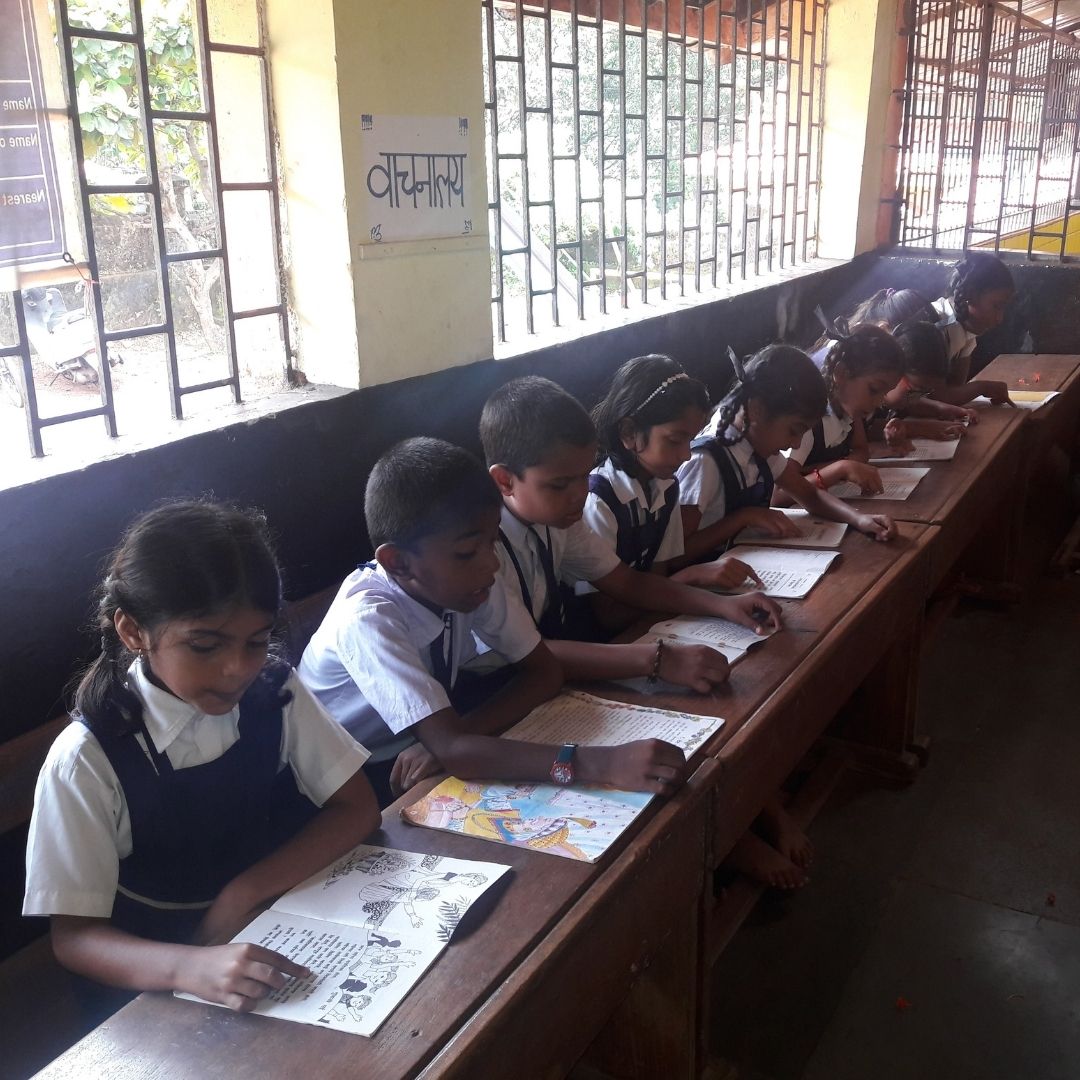
Image Credit: Wikipedia (Representational Image)
School-Going Children Availing Tuitions Rose By 40%: ASER Report
Writer: Ratika Rana
Her primary objective is to inform, promote, educate and cultivate readers through writing.
India, 18 Nov 2021 1:04 PM GMT
Editor : Ankita Singh |
A literature lover who likes delving deeper into a wide range of societal issues and expresses her opinions about the same. Keeps looking for best-read recommendations while enjoying her coffee and tea.
Creatives : Ratika Rana
Her primary objective is to inform, promote, educate and cultivate readers through writing.
The Annual Status of Education Report (ASER) is the oldest survey of its kind, and the 16th edition was conducted over the phone for more than 75,000 children aged between 5 to 16 years.
Education post-pandemic experienced a radical change when it shifted online. As the schools, both government and private, tumble towards what was once considered 'normal', India's oldest and one of the most reliable education surveys have shown a magnificent increase in enrollments in government schools. At the same time, private schools are having a hard time getting signups. The 16th Annual Status of Education Report (ASER) showed that the learning support for children at home has decreased compared to last year.
Key Findings Of The Report
One of the key findings of the report showed that in 2018, less than 30 per cent of the total students took private tuitions, whereas, in 2021, over 40 per cent of students opted to take private tuitions. A significant increase was visible in all sexes, classes and school types. The most disadvantaged households saw the maximum jump in tuitions for children. The homes where the parents had lower educational qualifications saw a rise of 12.6 per cent. On the other hand, in houses where parents were considerably well-qualified, the rate of children reaching out for tuitions stood at 7.2 per cent.
The survey showed that only two-thirds of children received learning support at home compared to three-fourth in 2020. Students studying in higher classes saw the sharpest drop learning support at homes. Over 75 per cent of private school going children whose schools have not reopened receive help at home as opposed to 70.4 per cent whose schools have reopened. Mostly, fathers were less supportive of education in recent times.
The Indian Express quoted Suman Bhattacharjea, the director of ASER Research Centre, saying that one in three students in the primary grades of Class 1 and 2 have never attended physical classes in school. The percentage is 36.8 per cent in government schools and 33.6 per cent in private schools. Moreover, the lack of technology for the young learners of the primary school was one of the most worrying concerns of the survey. About one-third of all children from classes 1 and 2 did not have access to a smartphone at home. From 2018 to 2021, the percentage of children enrolled in schools who have at least one smartphone at home increased from 36.5 per cent to 67.6 per cent.
More than 65 per cent of teachers flagged that one of the most common problems they are facing in recent times is the students' inability to catch up. Therefore, it is imminent that students' learning outcomes are set to be affected unless the concern is addressed with urgency. Another recent survey by the central government titled 'National Achievement Survey (NAS)' reported that teachers and field investigators across the country found that students in primary school struggled to make sense of the questions for basic comprehension and numerical skills.
The Silver Lining
The silver lining of the report was the decline in the non-enrollment rate in the age group of 15 to 16 years, one that was most vulnerable to dropping out. The report mentioned, "In 2010, the proportion of 15-16-year-olds who were out of school was 16.1%. Driven by the government's push to universalise secondary education, this number has steadily declined and stood at 12.1% in 2018. The decline continued in 2020 to 9.9% and 6.6% in 2021". Another positive outcome of the report was that 91.9 per cent had textbooks for the grade they were studying in. However, only 33.5 per cent of students in classes 1 and 2 of schools that are yet to reopen reported having received learning material, virtual or in print, from their respective schools.
Pratham Education Foundation facilitates the ASER Report, which is one of the oldest surveys of its kind. The report is often well-referred for a range of insights for foundational learning at the elementary level. The report was switched to assess the learning outcomes in times of the pandemic. The survey was conducted in 25 states and three union territories and covered 76,706 households and 75,234 children aged five to 16 years.
Also Read: President Kovind Inaugurates New Look Of Haryana's Model Sui Village
 All section
All section














